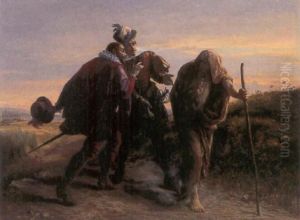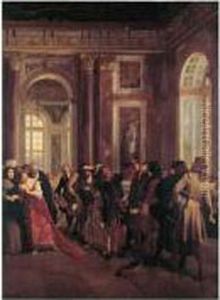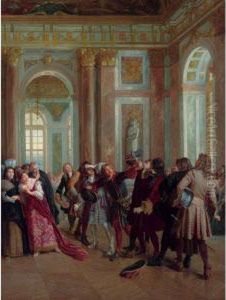Gaston Melingue Paintings
Gaston Melingue was a French painter, sculptor, and playwright born on February 24, 1840, in Rouen, France. He was a versatile artist whose works spanned a range of subjects and styles, from historical paintings and landscapes to sculptures and stage designs. Melingue's artistic journey was deeply influenced by the rich cultural heritage of his homeland as well as the vibrant artistic scene in Paris, where he eventually settled and pursued his career.
Melingue was educated at the École des Beaux-Arts in Paris, a prestigious institution that nurtured many notable artists of the time. His education there allowed him to hone his skills under the guidance of accomplished masters, absorbing the classical approaches to art that were prevalent during the mid-19th century. However, Melingue was not content to merely follow tradition; he was known for infusing his works with a personal touch that often reflected contemporary concerns and sensibilities.
Throughout his career, Melingue exhibited his works at various salons and exhibitions, gaining recognition for his artistic talents. His paintings often depicted scenes from French history, imbued with a romanticism that captured the imagination of his audience. In addition to his visual arts practice, Melingue was deeply involved in the theater world, contributing as a playwright and set designer. This involvement in the theatrical world influenced his visual art, lending a dramatic flair and narrative depth to his paintings and sculptures.
Melingue's contributions to art were not limited to his own creations. He was also an influential figure in the artistic community, engaging with contemporary debates about art and aesthetics, and mentoring younger artists. His works, characterized by their emotional depth and technical proficiency, left a lasting impact on the French art scene of the late 19th and early 20th centuries.
Gaston Melingue passed away on March 22, 1914, leaving behind a legacy that continues to be appreciated by art historians and lovers of French art. His ability to traverse the worlds of painting, sculpture, and theater, all while maintaining a distinctive voice, marks him as a unique figure in the annals of French cultural history. Today, his works can be found in museums and private collections, where they continue to be celebrated for their historical significance and artistic beauty.



